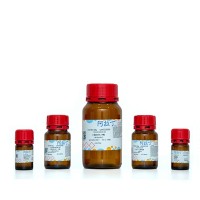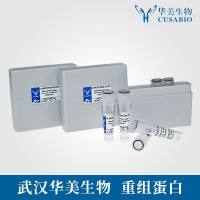PCR Cloning of Neural Gene Products
互联网
- Abstract
- Table of Contents
- Materials
- Figures
- Literature Cited
Abstract
Of the many proteins that are known to be involved in neuronal signaling, one family of gene products, collectively referred to as the G protein?coupled receptors (GPCRs), has received considerable attention. Within the transmembrane domains of GPCRs are clusters of amino acids that tend to be conserved among receptors that bind related ligands. Polymerase chain reaction (PCR)?based approaches to cloning novel GPCRs typically begin with the identification of these well?conserved amino acid motifs, which are then back?translated into degenerate oligonucleotide primers. These pools of degenerate oligonucleotides are the most important variables in PCR cloning of GPCRs. Although GPCRs are used as the focus of this unit, the strategies and techniques described are applicable to the cloning of a wide variety of neuronal gene products. In the first procedure in this unit, either total or poly(A)+ purified RNA is reverse transcribed into first?strand cDNA. In subsequent steps the cDNA product serves as the template for synthesis and amplification of target receptor sequences by PCR primed with degenerate oligodeoxynucleotides. The product is ready to be cloned and screened as described. Guidelines for database searching are provided to help identify the cloned gene from the known sequence. Typically, only a portion of the receptor coding region is cloned by the above approach. Rapid amplification of cDNA ends (RACE) or anchored PCR is described in this unit and is used to obtain a full?length cDNA amenable for expression studies.
Table of Contents
- Basic Protocol 1: Amplification Using Degenerative Primers
- Basic Protocol 2: Anchored Amplification of Regions Downstream (3′) of Known Sequence
- Basic Protocol 3: Anchored Amplification of Regions Upstream (5′) of Known Sequence
- Support Protocol 1: Cloning and Screening the PCR Product
- Support Protocol 2: Database Searching
- Reagents and Solutions
- Commentary
- Figures
Materials
Basic Protocol 1: Amplification Using Degenerative Primers
Materials
Basic Protocol 2: Anchored Amplification of Regions Downstream (3′) of Known Sequence
Materials
Basic Protocol 3: Anchored Amplification of Regions Upstream (5′) of Known Sequence
Materials
|
Figures
-
Figure 4.2.1 Flow chart of downstream (3′) anchored PCR protocol. The steps correspond to those in . Note that primer 2 can be immediately adjacent (3′) to, or can partially overlap with, primer 1. View Image -
Figure 4.2.2 Flow chart of upstream (5′) anchored PCR protocol (see text for details). The steps correspond to those listed in . Note that primer 4 can be immediately adjacent to, or can partially overlap with, primer 3. View Image
Videos
Literature Cited
| Literature Cited | |
| Ausubel, F.A., Brent, R., Kingston, R.E., Moore, D.D., Seidman, J.G., Smith, J.A., and Struhl, K. 1999. Current Protocols in Molecular Biology. John Wiley & Sons, New York. | |
| Buck, L. and Axel, R. 1991. A novel multigene family may encode odorant receptors: A molecular basis for odor recognition. Cell 65:175‐187. | |
| Bunzow, J.R., Saez, C., Mortrud, M., Bouvier, C., Williams, J.T., Low, M., and Grandy, D.K. 1994. Molecular cloning of a putative member of the opioid receptor family which is not a µ, δ, or κ opioid receptor subtype. FEBS Lett. 347:284‐288. | |
| Frohman, M.A., Dush, M.K., and Martin, G.R. 1988. Rapid production of full length cDNAs from rare transcripts: Amplification using a single gene‐specific oligonucleotide primer. Proc. Nat. Acad. Sci U.S.A. 85:8998‐9002. | |
| Grandy, D.K., Zhou, Q.Y., Saez, C., Bouvier, C., and Bunzow, J.R. 1995. Cloning of G protein–coupled opioid receptors using degenerate PCR and low‐stringency homology screening. In: Receptor Molecular Biology, Methods in Neurosciences, Vol. 25 (S.C. Sealfon, ed.) pp. 90‐104. Academic Press, Orlando, Fla. | |
| Kozak, M. 1987. An analysis of 5′‐noncoding sequences from 699 vertebrate messenger RNAs. Nucl. Acids Res. 15:8125‐8148. | |
| Holton, T.A. and Graham, M.W. 1991. A simple and direct method for direct cloning of PCR products using ddT‐tailed vectors. Nucl.Acids Res. 19:1156. | |
| Marchuk, D., Drumm, M., Saulino, A., and Collins, F.S. 1991. Construction of T‐vectors: A rapid and general system for direct cloning of unmodified PCR products. Nucl. Acids Res. 19:1154. | |
| Martin, F.H., Castro, M.M., Aboul‐ele, F., and Tinoco, I. 1985. Base pairing involving deoxyinosine: Implications for probe design. Nucl. Acids Res. 13:8927‐8938. | |
| Matsuoka, I., Mori, T., Aoki, J., Sato, T., and Kurihara, K. 1993. Identification of novel members of G–protein coupled receptor superfamily expressed in bovine taste tissue. Biochem. Biophys. Res. Commun. 194:504‐511. | |
| Mills, A. and Duggan, M.J. 1993. Orphan seven transmembrane domain receptors: Reversing pharmacology. rends Pharm. Sci. 14:394‐396. | |
| Myers, T.W. and Gelfand, D.H. 1991. Reverse transcription and DNA amplification by a Thermus thermophilus DNA polymerase. Biochemistry 30:7661‐7665. | |
| Nakamura, Y., Wada, K.N., Wada, Y., Doi, H., Kanaya, S., Gojobori, T., and Ikemura, T. 1996. Codon usage tabulated from the international DNA sequence databases. Nucl. Acids Res. 24:214‐215. | |
| Ohara, O., Dorit, R.L. and Gilbert, W. 1989. One‐sided polymerase chain reaction: The amplification of cDNA. Proc. Natl. Acad. Sci.U.S.A. 86:5673‐5677. | |
| Zhou, Q.Y., Grandy, D.K., Thambi, L., Kushner, J., Van Tol, H.H.M., Cone, R., Pribnow, D., Salon, J., Bunzow, J.R., and Civelli, O. 1990. Molecular characterization of functional human and rat D1 dopamine receptor genes. Nature 347:76‐80. | |
| Internet Resources | |
| www.ncbi.nlm.nih.gov | |
| National Center for Biotechnology Information site for database searching and other resources. NCBI database searches can also be conducted via e‐mail by addressing the message to blast@ncbi.nlm.nih.gov. Instructions for use of the NCBI's resources is available by typing the word help. Sequences may also be retrieved by addressing the message to retrieve@ncbi.nlm.nih.gov and again typing help for additional information. | |
| http://www.receptor.mgh.harvard.edu/GCRDBHOME.html. or http://www.receptor.mgh.harvard.edu/Alignments.html | |
| Informal collaboration of G protein–coupled receptor databases. |







